I was a child star scoring my first TV role aged 11 – it led to a life of body dysmorphia that I still suffer from aged 39
It was quite a challenge to step onto a TV screen for the first time. I was only 11 years old and had recently been cast in a popular British children’s drama, Byker Grove.
As a pre-teen in the 90s, I had no idea how to do my hair or makeup and had little knowledge of the fashion of the time (other than what I saw my school friends wearing).
I remember walking into the bright makeup room and feeling so small next to the older (more experienced) girls in the cast. They were only a few years older than me, but they seemed so refined and confident, while I held back, unsure of what to do.
The makeup artist was showering them with compliments: ‘Your hair looks amazing!’ ‘Wow, you look so pretty’ and then she turned to me and said, ‘Oh, you have really bad skin, we need to cover it up’. I could feel my face turning red.
Unfortunately, that one moment would have a profound impact on the next ten years of my life.
Coventry-based actress Holly Matthews, who runs The Happy Me Project, which helps women build their self-confidence, revealed that her TV appearances left her with body dysmorphia
Growing up with television meant that for six months of the year (the time it took to film a series) I had someone “correcting” my face. The other six months I saw my face on television and was very aware that people were watching me.
Nowadays we are used to seeing people on screens and we have all gotten used to staring at ourselves. But social media was not an idea back then. Being on TV meant people were staring at us, and that was unusual.
So at a young age I started seeing my body through other people’s eyes. Would this look good in the costume? Would this look good on screen? Would this be allowed by the producers?
And I almost saw myself and my body as a product, a character that I had to paint and carve and modify to fit the version that the world needed me to be. I now understand that this is called ‘self-objectification’.
Self-objectification is when a person sees themselves as a physical object first and a human being second, an object to be viewed and judged based on appearance. As a result, they may be hypercritical of their body.
In my teenage years I could have regaled you with a long list of ‘plastic surgeries’ and ‘treatments’ that I had to undergo; a list that also included breast prostheses and ‘ankle prostheses’ (I’m not sure if ‘ankle prostheses’ ever existed).
The problem with this kind of hypercritical negative thinking is that our brains are programmed based on something called confirmation bias. When I started thinking negatively about my physical appearance, I saw confirmation of it everywhere I went.
A blonde glamour model with big breasts? Well, that was proof of how ugly I was. A comment about how I looked like my father – that would mean I looked like a boy and wasn’t feminine.
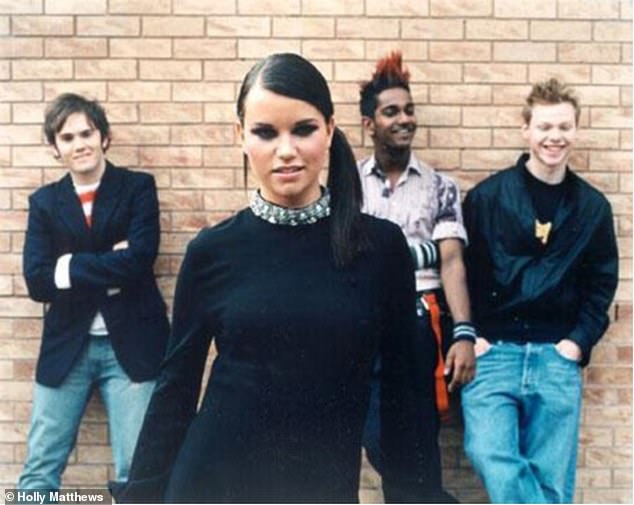
Matthews began her career in the BBC children’s drama Byker Grove, where she played the role of Emma Miller from 1995 to 2003. She left the series in 2003 to pursue a singing career after signing with Sony UK, and released a single, ‘Little Miss Perfect’
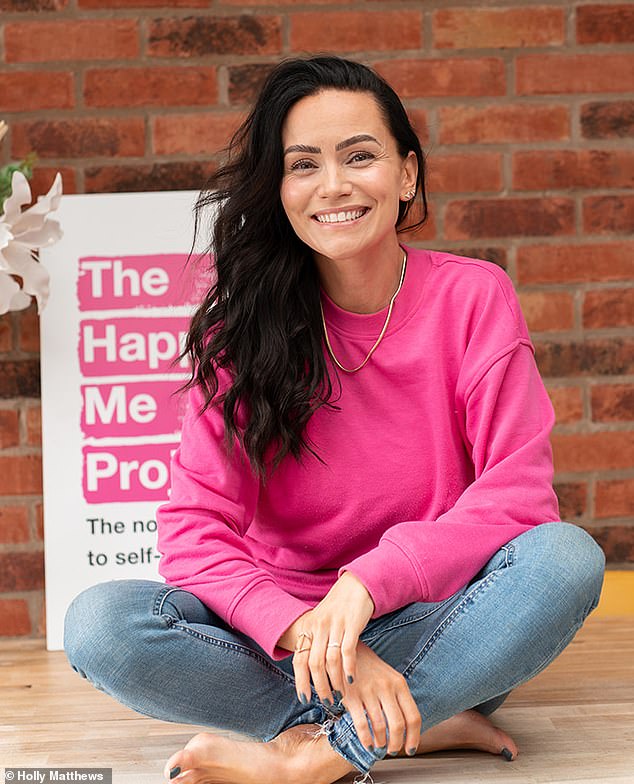
Holly, 39, runs the award-winning The Happy Me Project, which helps women build their self-confidence
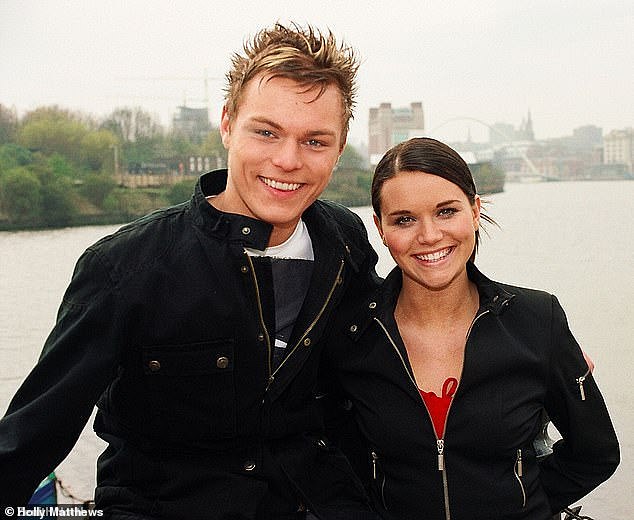
Holly was cast in the popular British children’s drama Byker Grove (pictured with castmate Andrew Hayden Smith)
Once I heard a relative say that he thought my sister was “naturally more beautiful” than me. To me this meant: “You should always TRY to look beautiful.”
For years I was obsessed with my appearance: self-tanning, plucking, shaving, waxing, eyelashes, acrylic nails, straightening my naturally wavy hair, makeup… and the idea of leaving the house without all of these things checked off was terrifying.
Boys started to notice and by my late teens I had perfected my confident outward appearance and the likelihood of being labeled as “she loves herself” was far greater than the turmoil I felt inside.
Every day was filled with self-criticism and self-examination. I was constantly looking in the mirror, always looking for the ‘flaw’ that would give me away, or show people that I was not ‘naturally beautiful’.
In my late teens and early twenties I began to be consumed by this body dysmorphia. I couldn’t see what other people saw in me and every time I looked in the mirror all I saw was something to change, fix and correct.
It was incredibly tiring and meant I was getting up at the most awful hours of the day to check I had completed my meticulous ritual of getting ready and could leave the house.
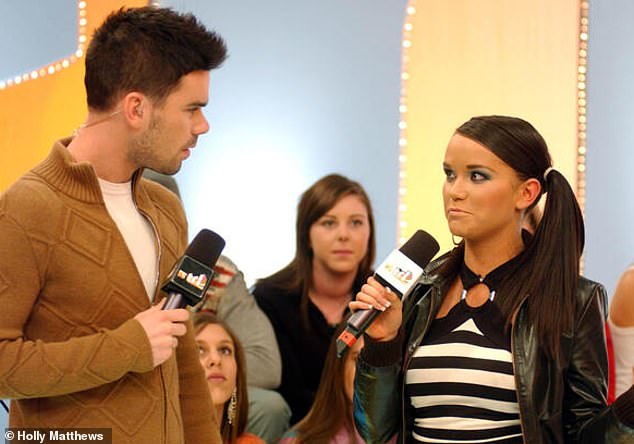
Holly said that as a teenager she was full of ‘Every day was full of self-criticism and self-examination’
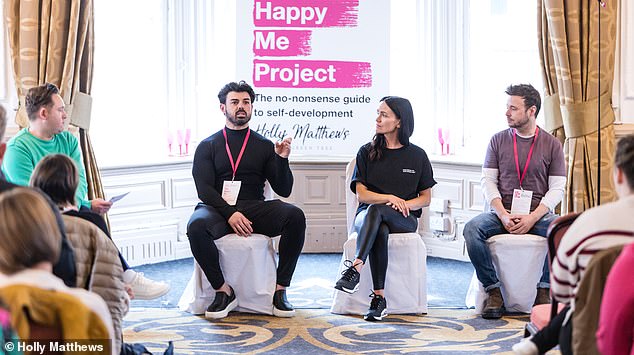
Holly came up with the concept of The Happy Me Project to help people struggling with grief after losing her husband Ross
Luckily, during those years I had also realized that how I was feeling was not healthy or productive and had started therapy and reading self-development books to change. I wanted ways to shift the internal noise.
This work started to have an effect and I became more confident about my appearance. Sometimes I even dared to walk around without make-up or a tan. But just when I thought I was at a point where I could like myself and my body, I became pregnant with my first daughter, Brooke, who is now 13.
I couldn’t see what others saw in me. Every time I looked in the mirror, all I saw was something that could be changed, fixed, corrected.
The pregnancy body was fun. I didn’t mind being pregnant and it was almost new to have a bigger body (I’ve been smaller my whole life). The mental challenge for me didn’t come until my daughter was born and my body was ‘deflating’ and settling into its new normal.
I had learned all the beauty tricks I had to prevent stretch marks and sagging skin, I was a ‘good girl’ and I believed somewhere that I deserved to get my body back to exactly how it was before pregnancy.
But as I stared at my post-pregnancy belly in the mirror, with red raw “scratches” crawling across my belly, I sobbed. This felt like failure.
The next day I booked myself into Harley Street for a consultation. I was a size 10 and was almost straight back into my pre-pregnancy jeans, but my dysmorphic research had led me to the conclusion that I needed a ‘mini tummy tuck’.
It feels so sad and shameful to share this. I can feel the collective judgement of people reading this and there is so much shame attached to this moment.
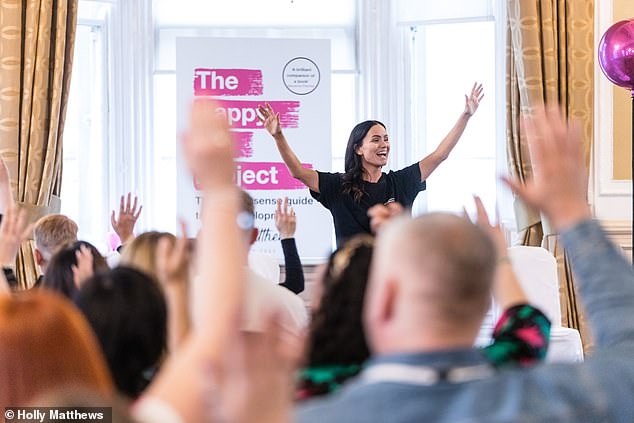
Find Your Confidence: The No-Nonsense Guide to Self-Confidence by Holly Matthews is out September 16 from Bloomsbury Publishing
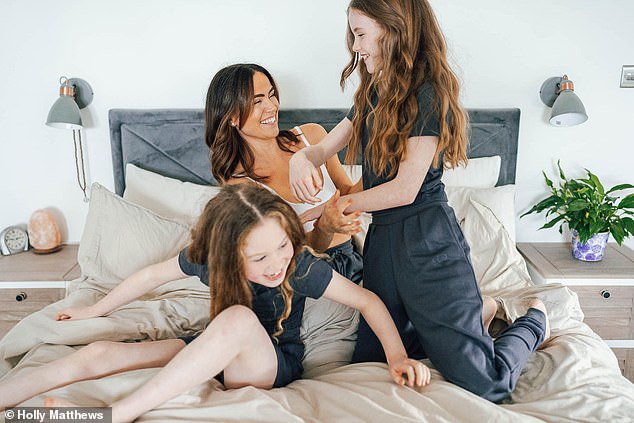
Holly has built a new life with her adorable daughters Texas (left) and Brooke (right)
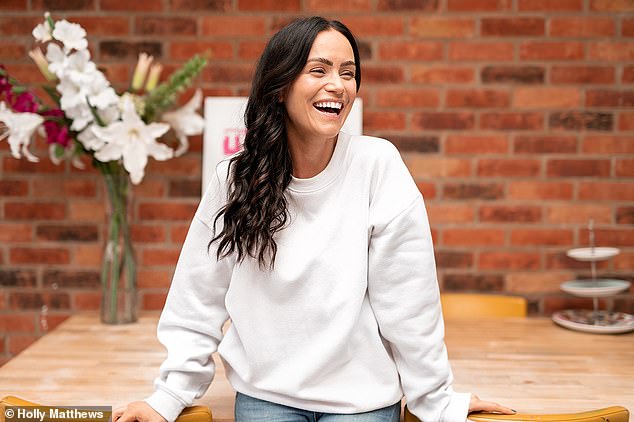
The mother of two believes in the power of positive thinking, even in extremely dark times
I sat nervously in Harley Street for my consultation, explaining my concerns and desires to remove the stretch marks and lose the weight I had gained during pregnancy to a sympathetic woman.
I felt like she understood my situation. She listened and politely told me that she didn’t want to do surgery because I didn’t need a tummy tuck. She also told me to give myself time to get used to my new body.
This was the kindest thing this woman could have done for me. It was a wake-up call for me that I had once again slid into a hypercritical attitude that was not in line with what the world saw.
Does this mean I no longer love my stretch marks and that I will never have a day where I am critical of my body again?
Of course not, but in the years since that day I have worked more on my mind than on external changes, and the impact on my well-being has been enormous.
So much so that I am now sharing my own lessons and journey of comparing myself and it is an entire chapter in my new book (possibly the hardest to write). Let me share the key things I did in the beginning that started to change my mind:
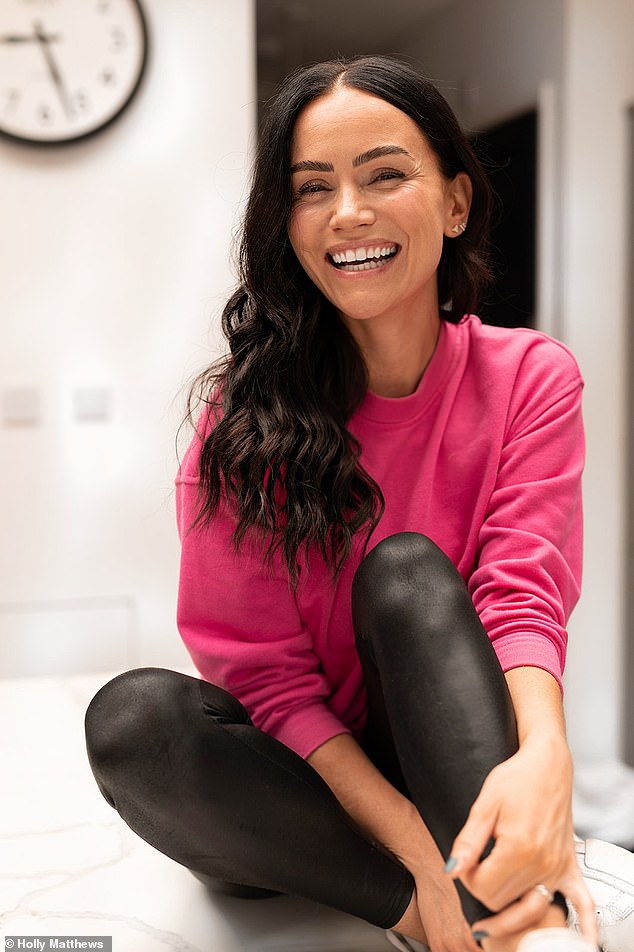
Holly said she started focusing on what her body could do and had compassion for the journey the body was on
STOP, DELETE and EDIT. Listen to what your inner critic is saying: ‘You’re so ugly, you can’t wear that’ STOP, DELETE the critical phrase and REPLACE it with something BETTER, ‘I look good’ ‘I look good with the color yellow’ and work from there.
I accepted compliments with a THANK YOU, without diving into a bunch of reasons why I am the opposite of what they just said.
Stopped reading beauty and gossip magazines (as director Baz Luhrmann read in Everybody’s Free: “They just make you feel ugly!”)
But most importantly, I focused on what my body could do and empathized with the journey the body was taking.
Holly Matthews, 39, runs the award-winning The Happy Me Project, which helps women boost their self-confidence.
Find Your Confidence: The No-Nonsense Guide to Self-Confidence by Holly Matthews is out September 16 from Bloomsbury Publishing
